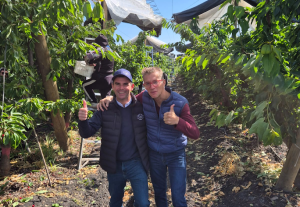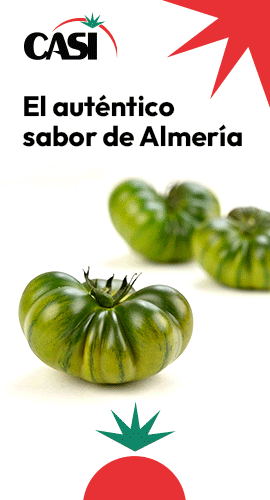The “Table Grape Business Tour” concluded today in Bari (Puglia), following three intense days of business visits and meetings aimed at strengthening international trade relations in the table grape sector.
The initiative, promoted by the Italian Ministry of Agriculture, Food Sovereignty, and Forestry, and organized by ISMEA (Institute of Services for the Agricultural and Food Market) with the operational support of CUT (Italian Table Grape Commission), was held from October 22 to 25, in conjunction with the first edition of “LUV,” the European fair entirely dedicated to the table grape sector.
Buyers, importers, and journalists from Qatar, Saudi Arabia, United Arab Emirates, Poland, Vietnam, and Canada had the opportunity to visit vineyards at the peak of the harvest in important local production areas. They also participated in B2B meetings organized at the LUV Fair with some of the most representative table grape organizations from Puglia and experienced the charm of iconic Apulian locations, such as Alberobello, the capital of the “trulli,” UNESCO World Heritage buildings, and Polignano a Mare, authentic gem of the Adriatic sea perched on high cliffs.
The “Table Grape Business Tour” follows a similar event held a few weeks earlier in Trentino Alto Adige, focusing on the apple industry. Like apples, table grapes are one of Italy’s top export-oriented fruit products, with exports exceeding €820 million in 2023 (+13% compared to 2022), and even more substantial growth in the first seven months of this year (+36%). Italy is the leading European producer of table grapes and the third-largest exporter globally, behind Peru and the Netherlands, with a 10% share of the global market. This strong position is due to the recognized quality of Italy’s traditional varieties, alongside the increasing introduction of new seedless varieties, which are now in higher demand. 
Several major production and packaging/distribution companies in the region opened their doors to the foreign delegation, including NAVA srl, Agripuglia Fruit srl, and Orchidea Frutta srl in Rutigliano (Bari); Meridia producers’ organization in Noicattaro (Bari); Azienda Agricola Gasparro in Acquaviva delle Fonti (Bari); and 2ERRE Fruits & Vegetables srl in Polignano (Bari).
TABLE GRAPE FACT SHEET
- PRODUCTION:
The 2024 Italian table grape season expects a production of approximately 800 million kg, down from 2023, which had already seen a significant drop from previous years. This year’s decrease is primarily due to a reduction in the cultivated area, as traditional seeded varieties are being replaced with seedless ones, as well as climate and phytosanitary challenges, particularly the prolonged drought that has affected key production areas in Sicily and Apulia, further reducing yields. However, from a qualitative perspective, the grapes are showing optimal characteristics in terms of color and sugar content (Brix level).
- FARMGATE PRICES:
Due to limited supply, market dynamics have been favorable, with prices at the farmgate level holding steady at 2023 levels. Field transactions are moving quickly, with prices considered satisfactory. Except for a few varieties like Vittoria and certain trading areas, most prices have risen compared to both 2023 and the 2021-23 period.
- RETAIL SALES:
Data from the ISMEA-NielsenIQ observatory on Italian household food purchases show an increase in both volume (+24%) and spending (+28%) for the first nine months of the year compared to the same period in 2023. Packaged grapes in particular have shown even stronger growth, with a +25% increase in volume and +30% in value.
- INTERNATIONAL TRADE:
Globally, the table grape market involves around 5 million tons of product, worth approximately €9 billion. In 2023, Peru was the world’s leading exporter, accounting for 19% of the total value, followed by the Netherlands and Italy (both at 10%), China and Chile (9% each), and the United States (8%). Italy remains Europe’s top producer and the third-largest global exporter, with foreign sales exceeding €820 million. Between 2020 and 2023, Italian table grape exports saw a reduction in volume, dropping from 469 million kg to 384 million kg. However, higher average prices, rising from €1.55 to €2.14 per kg, led to an increase in export revenues, from €727 million in 2020 to €821 million in 2023, with prospects for further growth in 2024 (+36% in the first seven months of the year).
LUV Fair The first European trade fair dedicated to table grapes kicks off
Italy’s main export markets for table grapes are Germany, which accounts for over a third of total exports, followed by France (16%) and Poland (8%). Among non-European markets, countries in the Gulf, particularly Saudi Arabia and the United Arab Emirates, stand out, although 2023 saw a slowdown in shipments to the latter.
On the passive side of the trade balance, there has been an increase in imports by Italy, which grew from 18 to 20 million kg between 2020 and 2023, reaching a value of €54 million. Among suppliers, the Netherlands stands out as the leader for off-season product supplies, followed by Spain for seasonal products. These two countries account for 60% of imports in terms of value. Notably, among non-EU suppliers, Peru (10%), Egypt (8%), and Chile (5%) also play significant roles.
For further insights, visit Tendenze Uva da tavola






















